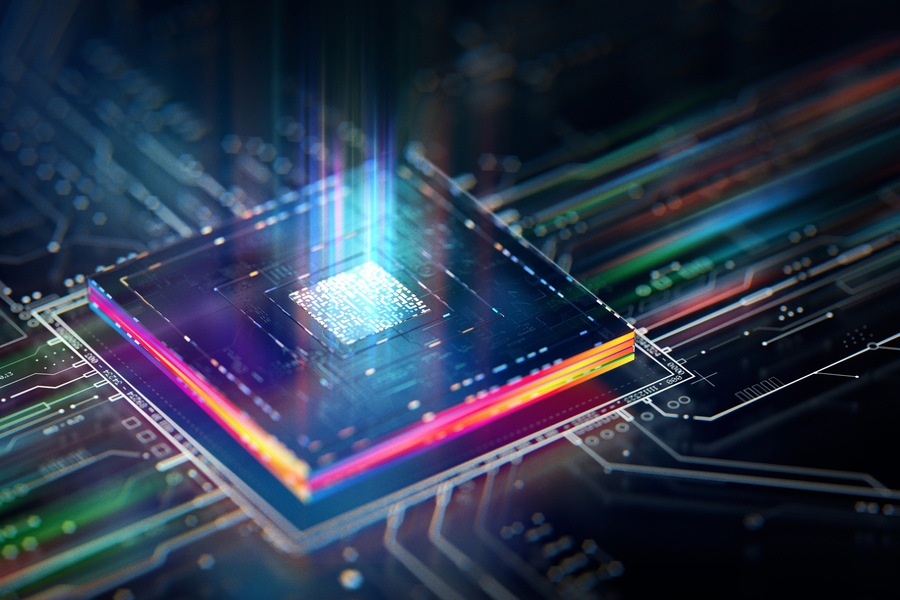Two teams led by MIT researchers were selected in December 2023 by the U.S. National Science Foundation (NSF) Convergence Accelerator, a part of the TIP Directorate, to receive awards of $5 million each over three years. The NSF Convergence Accelerator is a multidisciplinary and multisector program whose goal is to accelerate use-inspired research into solutions that have societal impact. The Convergence Accelerator’s Track I: Sustainable Materials for Global Challenges, headed by Program Director Linda Molnar, funds projects to develop solutions which both capture the full product life cycle through the advancement of fundamental science and use circular design to create environmental and economically sustainable materials and products.
The MIT teams chosen for this current round of funding belong to Track I and will address current and future needs for environmental sustainability and scalability in advanced semiconductor products across the entire value chain.
One of the MIT-led teams, Topological Electric, is led by Mingda Li, an associate professor in the Department of Nuclear Science and Engineering. This team will be finding pathways to scale up sustainable topological materials, which have the potential to revolutionize next-generation microelectronics by showing superior electronic performance, such as dissipationless states or high-frequency response.
The FUTUR-IC team, led by Anuradha Agarwal, a principal research scientist at MIT’s Materials Research Laboratory, will innovate to address the major bottleneck to the continued scaling of microchip performance at constant cost, power, and improved environmental footprint, with a STEM and green-innovation-trained workforce, by pioneering pathways for the heterogeneous integration of processor, accelerator, and memory chips within a common package. The team does so by creating new electronic-photonic integration technologies which provide high-bandwidth and low-latency data transfer, with reduced environmental impact in both the manufacturing and use phases. And, because there is no incumbent technology to displace, demonstration of this combined three-dimensional technology-ecology-workforce approach, within an alliance of industry leaders, will facilitate easier industry adoption.
Scaling the use of topological materials
Some materials based on quantum effects have achieved successful transitions from lab curiosities to effective mass production, such as blue-light LEDs, and giant magnetoresistance (GMR) devices used for magnetic data storage, according to Li. But he says there are a variety of equally promising materials that have shown promise but have yet to make it into real-world applications.
“What we really wanted to achieve is to bring newer-generation quantum materials into technology and mass production, for the benefit of broader society,” he says. In particular, he says, “topological materials are promising for the advancement of critical technologies such as spintronics, optoelectronics, thermoelectrics, and quantum computing.
Topological materials have electronic properties that are fundamentally protected against disturbance. For example, Li points to the fact that just in the last two years, it has been shown that some topological materials are even better electrical conductors than copper, which is typically used for the wires interconnecting electronic components. However, unlike the blue-light LEDs or the GMR devices, which have been widely produced and deployed, when it comes to topological materials, “there’s no company, no startup, there’s really no business out there,” adds Tomas Palacios, a professor at the Department of Electrical Engineering and Computer Science and co-principal investigator on Li’s team. Part of the reason is that many versions of such materials are studied “with a focus on fundamental exotic physical properties with little or no consideration on the environmental sustainability aspects,” says Liang Fu, a professor of physics and a co-PI. Their team will be looking for alternative formulations that are more amenable to mass production.
One possible application of these topological materials is for detecting terahertz radiation, explains Keith Nelson, an MIT professor of chemistry and co-PI. These extremely high-frequency electronics can carry far more information than conventional radio or microwaves, but at present there are no mature electronic devices available that are scalable at this frequency range. “There’s a whole range of possibilities for topological materials” that could work at these frequencies, he says. In addition, he says, “we hope to demonstrate an entire prototype system like this in a single, very compact solid-state platform.”
Li says that among the many possible applications of topological devices for microelectronics devices of various kinds, “we don’t know which, exactly, will end up as a product, or will reach real industrial scaleup. That’s why this opportunity from NSF is like a bridge, which is precious to allow us to dig deeper to unleash the true and full potential of this class of materials.”
The Topological Electric team includes Tomas Palacios, the Clarence J. Lebel Professor in Electrical Engineering at MIT; Liang Fu, a professor of physics at MIT; Qiong Ma, assistant professor of physics at Boston College; Farnaz Niroui, assistant professor of electrical engineering and computer science at MIT; Susanne Stemmer, professor of materials at the University of California at Santa Barbara; Judy Cha, professor of materials science and engineering at Cornell University; as well as industrial partners including IBM, Analog Devices, and Raytheon, team manager Stephanie Wade MBA ’22, and professional consultants. “We are taking this opportunity seriously,” Li says. “We want to see if the topological materials are as good as we show in the lab when being scaled up, and how far we can push to broadly industrialize them with environmental sustainability in mind.”
Toward electronic-photonic integration for sustainable microchip design, production, and use
The microchips behind everything from smartphones to medical imaging can be traced to greenhouse gas emissions, and every year the world produces more than 50 million metric tons of electronic waste. Further, the data centers necessary for complex computations and huge amount of data transfer — think AI and on-demand video — are growing and will require 10 percent of the world’s electricity by 2030.
“The current microchip manufacturing supply chain which includes production, distribution, and use, is neither scalable nor sustainable, and cannot continue. Together with our workforce, we must innovate our way out of this crisis with a new mindset of performance improvement within environmental constraints. Our academic-industry teams are creating solutions for current hot point technology transitions, and we take responsibility for placing technology-ecology solution tools in the hands of the next generation of semiconductor thought leaders,” says Agarwal.
The name of the team, FUTUR-IC captions the team’s mission of sustainable microchip manufacturing of future integrated circuits. Says Agarwal, “The current microchip scaling trend requires judicious use of mixed technology chiplets for higher speed and increased functionality within a common package platform for 2.5D and 3D heterogenous electronic-photonic integration. FUTUR-IC is enabling this foundational PFAS-free platform to achieve a package I/O target of 1.6 Pb/s data rates using chip-to-chip evanescence and micro-reflection within photonic interconnects. This form of electronic-photonic integration enables modularity for easier disassembly and helps meet ecology constraints of affordable and accessible repair of microchips in systems, decreasing energy consumption, as well as cutting electronic and chemical waste and greenhouse gas emissions associated with electronics by 50 percent every 10 years.”
FUTUR-IC alliance has 26 global collaborators and is growing. Current external collaborators include the International Electronics Manufacturing Initiative (iNEMI), Tyndall National Institute, SEMI, Hewlett Packard Enterprise, Intel, and the Rochester Institute of Technology.
Agarwal leads FUTUR-IC in close collaboration with others, including, from MIT, Lionel Kimerling, the Thomas Lord Professor of Materials Science and Engineering, co-PI; Elsa Olivetti, the Jerry McAfee Professor in Engineering, co-PI; Randolph Kirchain, principal research scientist, co-PI; Greg Norris, director of MIT’s Sustainability and Health Initiative for NetPositive Enterprise (SHINE), and Elizabeth Unger, research scientist. All are affiliated with the Materials Research Laboratory. They are joined by Samuel Serna, MIT visiting professor and assistant professor of physics at Bridgewater State University, a co-PI.
Other key personnel include Aristide Gumyusenge, assistant professor, Sajan Saini, education director, and Pradnya Nagarkar, technical program manager, all at MIT’s Department of Materials Science and Engineering; Timothy Swager, professor at the Department of Chemistry; Peter O’Brien, professor from Tyndall National Institute; and Shekhar Chandrashekhar, CEO of iNEMI.
“We expect the integration of electronics and photonics to revolutionize microchip manufacturing, enhancing efficiency, reducing energy consumption, and paving the way for unprecedented advances in computing speed and data-processing capabilities,” says Serna, who is the co-lead on the project’s technology dimension.
“Enabling the detection, capture, and remediation of PFAS, as well as the development of PFAS-free polymers for microchip processing and electronic-photonic packaging within the semiconductor industry, will be an important contribution to environmental sustainability in microchips as well as to other industries needing alternatives,” says Gumyusenge, who will partner with Swager on this effort, in collaboration with IBM’s PFACTS effort, also funded by NSF Convergence Accelerator’s Track I, program.
“Common assessment metrics for these efforts are needed,” says Norris, co-lead for the ecology dimension, adding, “The microchip industry must have transparent and open Life Cycle Assessment (LCA) models and data, which are being developed by FUTUR-IC.” This is especially important given that microelectronics production transcends industries.
“Given the scale and scope of microelectronics, it is critical for the industry to lead in the transition to sustainable manufacture and use,” says Kirchain, another co-lead and the co-director of the Concrete Sustainability Hub at MIT.
To bring about this cross-fertilization, ecology co-lead Olivetti, also co-director of the MIT Climate and Sustainability Consortium (MCSC), will collaborate with FUTUR-IC. “The program provides the opportunity to contribute to effective methods for life cycle assessment for chip manufacturing with inputs from companies along the supply chain from wafers to data centers. By working closely with the technology team, we will support metrics to monitor progress toward more sustainable design and processing in semiconductor innovation," says Olivetti.
Saini, the co-lead for the workforce dimension along with Unger, stresses the need for agility. “With a workforce that adapts to a practice of continuous upskilling, we can help increase the robustness of the chip-manufacturing supply chain, and validate a new design for a sustainability curriculum,” he says.
“We have become accustomed to the benefits forged by the exponential growth of microelectronic technology performance and market size,” says Kimerling, who is also director of MIT’s Materials Research Laboratory and co-director of the MIT Microphotonics Center: “The ecological impact of this growth in terms of materials use, energy consumption and end-of-life disposal has begun to push back against this progress. FUTUR-IC’s concurrently engineered solutions in these three dimensions will build a common learning curve to power the next 40 years of progress in the semiconductor industry.”
The MIT teams have received awards to develop sustainable materials for global challenges, through Track I of the NSF Convergence Accelerator program, which targets solutions to especially compelling problems at an accelerated pace by incorporating a multidisciplinary and multisector research approach.







